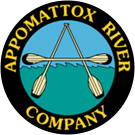Recreational Kayak Buying Guide: Length, Width, and Hull Shape
So you've decided you want a recreational kayak--a well-rounded, approachable boat for laid back days on flat water (if you haven't decided that yet, take a look at our first three Kayak Buying Guide installments here). The first factor you’ll want to look at when choosing a recreational flat water kayak is how it will move through the water. Some boats are faster or slower, more stable or less stable, easier or harder to control. These differences come down to hull shape—the length, width, and shape of the boat’s shell. Hull shape is a topic that could (and probably will eventually) get its own blog installment, but here's a quick and dirty set of four basic points to look for.
- Length: As a rule of thumb, longer boats are faster and shorter boats are slower. This happens because longer kayaks tend to have better tracking ability, or the ability to go in a straight line from point A to point B instead of sweeping from side to side with every paddle stroke. Most recreational kayaks fall in the 9-12 foot range. 9 or 10 foot kayaks will want to turn from side to side more easily and will consequently be slower. However, they are easier to maneuver, and you’ll be able to change direction quickly when you need to. They’re also lighter, easier to transport on land, and take less storage space. 12 foot boats are the most popular length for adults, as they hit a good balance of speed and turning ability.
- Width: Wider boats are usually more stable, while narrower boats can feel more tippy. The wider the kayak, the more work you will have to do to move it through the water, and the harder it will be to plant consistent, vertical paddle strokes that move the boat straight forward instead of side to side. Wider decks will offer more initial stability and room for more substantial seats. Narrow boats, on the other hand, are less stable, but usually slice through the water quite efficiently and offer the paddler a high degree of control.
- Hull shape: Modern hull shapes are harder to pin down than they used to be, but in a nutshell, you’ll want to look for a rounded, flat, or combination hull in most recreational kayaks. There are four main categories of hull shapes, and we’ve provided example photos of each one below for reference. The main takeaway here is that V-shaped hulls are fast and tippy, W-shaped hulls are stable and slow, and rounded or flat (planing) hulls usually find a good balance of the two for recreational kayakers. Very few kayaks have hulls that are strictly one type anymore—rather, you’ll find your best options combine two or three elements into an easy all-around shape that offers versatile performance. For example, it's very hard to find a pure V hull anymore, so the example we've provided here is is a V/round hybrid.

- Rocker: The last element of hull design to pay attention to is rocker, or how much the ends of the boat swoop up from the middle. A large amount of rocker helps a boat to get up and over chop, waves, and small rapids, and makes the kayak much more maneuverable when you need to change direction fast. Little or no rocker helps a boat track fast and straight, makes turning harder, and performs best in completely flat water. Most recreational kayaks have either no rocker or a small amount that is suitable for moving current and easy rapids up to class I or II.

With a good idea of what hull varieties to look for, we usually turn to comfort next. In the next installment of the Kayak Buying Guide, we’ll dive into seats and outfitting and how to find the right balance for you.


